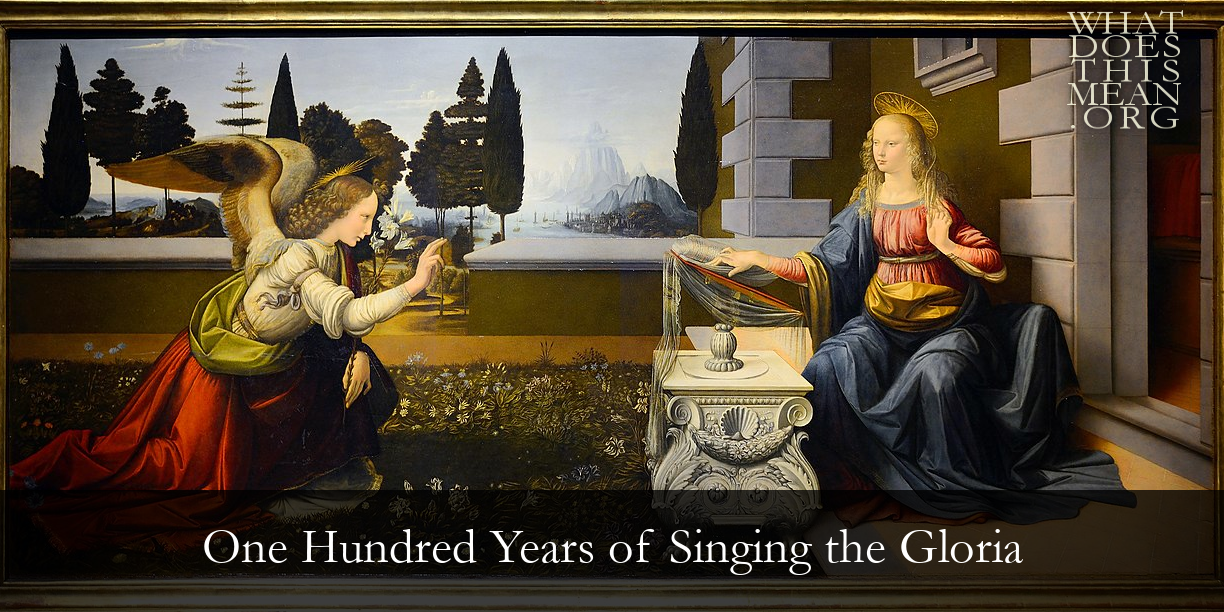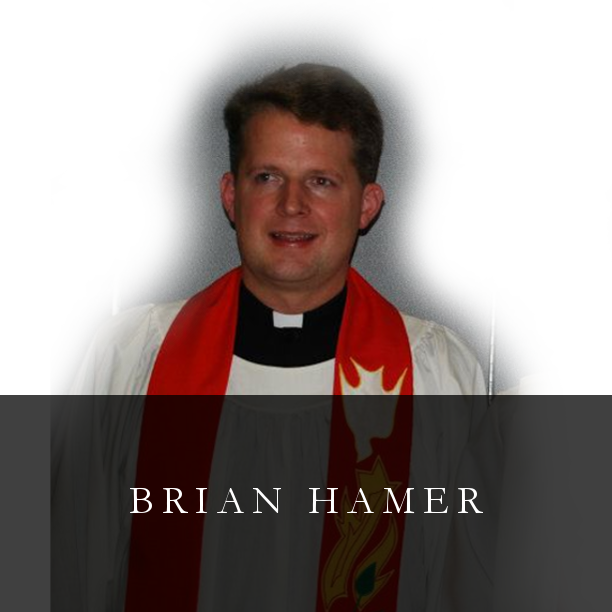[The Gloria] is based on the song of the angels at the birth of Christ: “Glory be to God on high: And on earth peace, good will toward men.” In the Divine Service, where our Lord Jesus Christ is truly present according to both His divine and human natures, there is no hymn that is more appropriate than the hymn that announces Immanuel–God with us! The song of the angels becomes our song in the Divine Service. In it we confess faith in Christ “who for us men and for our salvation came down from heaven and was incarnate by the Holy Spirit of the Virgin Mary and was made man” (Nicene Creed). His name is Jesus, “for He will save His people from their sins” (Matthew 1:21). This is God’s greatest glory! (Lutheran Catechesis [second edition], p. 95)
Dale Warland describes Martin’s setting of the Gloria: “[The Gloria] offers a perfect view into Martin’s heritage as a Swiss composer, landlocked culturally between two giants: here are fugues to make a German smile, but harmonies so sensuous that Martin could only be thinking of France” (ACC CD 120 liner notes). In other words, the art of the fugue is present in this movement, where one vocal part makes a musical statement and the other voices subsequently ‘chase’ or imitate the theme. (This art was perfected by Bach and used by Mendelssohn and numerous other German composers, so German composers more or less ‘own’ fugal technique.) In the following performance by the Bach Collegium San Diego, you will also hear rich harmonies—starting with the musical pyramid in the opening statement—which were common among early twentieth-century French composers. If these heady terms are a bit numbing, then follow the text closely (video times for Martin are on the left and for RVW on the right) and see how the composer paints everything from the majesty of the Father to the humiliation of the Son to the vivification of the Holy Spirit, depicted by a short fugue. If you so inclined, please join the conversation (see the chat window below) and indicate if you agree or disagree with Nick Strimple’s statement that Martin’s “remarkable serenity and strength exude a sense that real communication is occurring, not only between composer and audience but also between the composer and God” (Choral Music in the Twentieth Century, p. 67).
| Gloria in excelsis Deo. 0:52 Et in terra pax hominibus bonae voluntatis. 1:24 Laudamus te. Benedicimus te. Adoramus te. Glorificamus te. 1:48 Gratias agimus tibi propter magnam gloriam tuam. Domine Deus, Rex caelestis, Deus Pater omnipotens. Domine Fili unigenite, Jesu Christe. 2:36 Domine Deus, Agnus Dei, Filius Patris, Qui tollis peccata mundi, miserere nobis. Qui tollis peccata mundi, suscipe deprecationem nostram. Qui sedes ad dexteram Patris, miserere nobis. 3:49 Quoniam tu solus Sanctus. Tu solus Dominus. Tu solus Altissimus, Jesu Christe. 4:24 Cum Sancto Spiritu in gloria Dei Patris. Amen. | Glory be to God on high And on earth peace good will toward men. 0:36 We praise Thee. 0:36 We bless Thee. We worship Thee. We glorify Thee. 0:53 We give thanks to Thee 0:53 for Thy great glory. O Lord God, heavenly King, God the Father Almighty. O Lord, the only-begotten Son, Jesus Christ. 1:42 Lord God, Lamb of God, 1:42 Son of the Father. that takest away the sin of the world, 1:58 have mercy upon us. Thou that takest away the sin of the world, receive our prayer. Thou that sittest at the right hand of the Father, have mercy upon us. 2:50 For Thou alone art holy. 2:50 Thou only art the Lord. Thou only art the highest Jesus Christ. 3:24 With the Holy Spirit 3:24 in the glory of God the Father. Amen. |
[The Gloria] celebrates the Lord’s continual presence with His people through His merciful gifts of Word and sacrament. Jesus Himself is the “house of the Lord,” for “in Him dwells all the fullness of the Godhead bodily” (Colossians 2:9). Jesus declared, “’Destroy this temple, and in three days I will raise it up.’ . . . He was speaking of the temple of His body” (John 2:19, 21). (Lutheran Catechesis, p. 96)
Extra Choral Credit: Hearing RVW’s Entire Mass in G minor
Featuring the Choir of Clare College, Cambridge
Since the founding of a mixed voice choir in 1972, the Choir of Clare College has gained an international reputation as one of the world’s leading university choirs. In addition to its primary function of leading services three times a week in the College chapel, the Choir keeps an active schedule recording, broadcasting, and performing. Former directors have included John Rutter and Timothy Brown. Under the direction of Graham Ross, Director of Music since 2010, it has been praised for its consistently ‘thrilling’ and ‘outstanding’ performances worldwide. (https://www.clarecollegechoir.com/about-us. Accessed 08 May 2022)



 RSS Feed
RSS Feed
